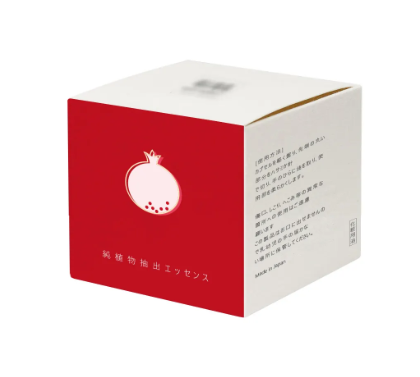
The Forest Stewardship Council (FSC) certification plays a pivotal role in sustainable packaging by promoting responsible forestry practices that minimize environmental impact. When employed in packaging, FSC-certified fibers ensure that the wood or paper material used comes from responsibly managed forests, which supports biodiversity and reduces the risk of deforestation. This commitment to sustainability is crucial in ensuring long-term ecological balance in forested areas.
On the other hand, recycled materials offer numerous environmental advantages, notably requiring an estimated 60% less energy for production compared to virgin materials. This reduction in energy use not only cuts down on greenhouse gas emissions but also helps decrease landfill waste, fostering a more circular economy. Companies are beginning to realize that utilizing recycled materials in their packaging solutions is not just a sustainable choice but an economically viable one as well.
Several companies have successfully implemented FSC-certified fibers and recycled materials to enhance their sustainability metrics. For example, multinational corporations like IKEA use recycled materials extensively in their packaging to minimize their environmental footprint. These efforts have translated into improved sustainability credentials, which not only appeal to environmentally conscious consumers but also fulfill regulatory requirements. By leveraging both FSC-certified fibers and recycled materials, businesses can significantly elevate their sustainability efforts and impact.
Recent advancements in plant-based inks have made them highly desirable options for sustainable packaging due to their ability to reduce toxic emissions and biodegrade naturally. Unlike traditional petroleum-based inks, plant-based variants are derived from sources like soy or algae, which help to minimize the release of volatile organic compounds (VOCs) and other harmful chemicals into the environment. This not only improves indoor air quality but also makes the recycling process much more efficient.
Water-based coatings are also gaining traction as they offer significant benefits such as reduced VOC emissions and enhanced recyclability, helping packaging comply with stringent environmental regulations. Unlike solvent-based coatings, water-based alternatives are typically less hazardous and more environmentally friendly, which is increasingly important for companies aiming to reduce their carbon footprint and adhere to eco-friendly policies.
According to recent industry trends, there is a growing adoption of these sustainable materials in the packaging sector. Research indicates an uptick in the use of plant-based inks and water-based coatings as companies seek to align themselves with global sustainability goals and consumer preferences for greener, safer products. This shift is driving the entire packaging industry towards a more sustainable future, where eco-friendly materials are not just an option but a standard.
Global legislation plays a crucial role in shaping eco-design standards for packaging. One of the most influential directives is the European Union's Packaging and Packaging Waste Directive, which mandates strict eco-design requirements for packaging. This legislation compels businesses to innovate towards sustainable solutions that minimize environmental impact. Companies must consider the entire lifecycle of their products, from production to disposal, ensuring that materials used contribute to sustainability goals. Industry experts anticipate that future amendments to these directives will further tighten requirements, pushing for even more comprehensive sustainability measures. Such anticipated changes are likely to drive increased investment in research and development, aiming to align with progressive eco-design standards globally.

Extended Producer Responsibility (EPR) is a pivotal concept in promoting sustainable packaging practices. EPR shifts the financial and physical responsibility for the disposal of packaging waste onto the producers, ensuring they embrace sustainable designs and materials. Many countries have started implementing EPR schemes, significantly impacting sustainable packaging initiatives. For instance, France and Germany have seen marked improvements in recycling rates following the adoption of EPR policies. Statistics reveal that EPR implementation can lead to an impressive increase in recycling rates, often surpassing the 60% mark, while simultaneously reducing landfill waste. These positive outcomes underscore the effectiveness of EPR in fostering a circular economy and driving manufacturers to consider sustainability in their packaging strategies.
Consumers are increasingly shifting their preferences towards reusable packaging formats due to their convenience, environmental benefits, and alignment with the zero-waste lifestyle movement. This trend is reflected in a growing demand for reusable packaging solutions, driven by market research indicating that more consumers are actively seeking out eco-friendly alternatives. Brands that have successfully adopted these reusable formats, like Loop, are leading the way, offering innovative solutions that reduce single-use waste. Testimonials and surveys consistently reveal that consumers are willing to pay a premium for products that offer sustainable packaging options, highlighting the value placed on environmental responsibility.
There is a rising demand among consumers for transparency in environmental claims regarding product packaging sustainability. When brands fail to provide clear and verifiable information, they risk public backlash and mistrust. As a consequence, companies are increasingly adopting practices that emphasize transparency and accuracy in their sustainability claims. Supporting studies show that consumers are more inclined to purchase from brands that openly communicate their sustainability practices and possess relevant certifications. Transparency not only builds consumer trust but also reinforces a brand's commitment to sustainability, influencing purchasing decisions significantly.
Right-sizing algorithms are revolutionizing packaging design by tailoring dimensions to fit products precisely, thereby significantly decreasing excess material usage and waste. By implementing these algorithms, companies can ensure that every inch of packaging serves a purpose, reducing both material costs and environmental impact. A compelling example is the fashion brand Zara, which uses right-sizing in its logistics to minimize packaging waste by up to 30%. Packaging efficiency extends beyond cost savings; it's about aligning with a sustainable ethos that resonates with today’s eco-conscious consumers. Insights from packaging engineers underscore the success of these algorithms, highlighting how they not only streamline operations but also contribute to a greener planet through reduced environmental footprint.
In the realm of sustainable packaging, lightweighting plays a pivotal role in lowering transportation emissions and costs. By defining lightweighting as the process of reducing the weight of packaging materials without compromising performance, businesses achieve significant sustainability benefits. Notably, Coca-Cola's lightweight bottle redesign decreased material usage by 10%, illustrating how such strategies cut emissions during transport. Innovations in lightweight materials, such as bio-based polymers, enable the creation of robust yet lighter packaging solutions that offer sufficient protection to goods in transit. These advancements demonstrate a commitment to sustainable packaging strategies, driving both environmental and economic advantages for companies keen on reducing their carbon footprint without sacrificing product integrity.
Standardized disposal iconography plays a pivotal role in guiding consumers toward proper recycling practices and reducing contamination rates. By providing clear and consistent icons on packaging, consumers are empowered to recycle correctly, thus fostering sustainable behavior. Successful initiatives, such as the "Recycle Now" campaign in the UK, have demonstrated a significant increase in recycling rates through strategic use of clear messaging and standardized icons. According to Recycle Now, 79% of people say their recycling behavior has been positively influenced by such campaigns. This demonstrates the power of standardized disposal guides in creating impactful, sustainable change.
Life-cycle assessment (LCA) is central to evaluating the environmental impact of packaging throughout its lifecycle. It involves assessing everything from raw material extraction to production, usage, and disposal. Companies can leverage LCA data to enhance their Environmental, Social, and Governance (ESG) reporting, ensuring accurate sustainability metrics align with corporate responsibility goals. A comprehensive study by the World Resources Institute reveals that businesses implementing LCA experience a 30% improvement in sustainability performance, as they can pinpoint areas for improvement and regulatory compliance. Such insights highlights the value of incorporating LCA in ESG frameworks, enabling companies to accurately reflect their environmental impact and commitment to sustainability.
FSC-certified fiber ensures that the wood or paper materials used come from responsibly managed forests, supporting biodiversity and reducing deforestation risks.
Recycled materials reduce energy consumption by about 60% during production, cutting greenhouse gas emissions and decreasing landfill waste.
Plant-based inks are derived from renewable sources like soy or algae, reducing VOC emissions and making recycling processes more efficient.
Global legislation like the EU's Packaging Directive mandates eco-design standards, driving companies to innovate towards sustainable packaging solutions.
EPR policies transfer the responsibility for waste disposal to producers, encouraging them to adopt sustainable packaging designs and materials.